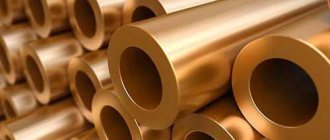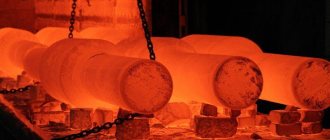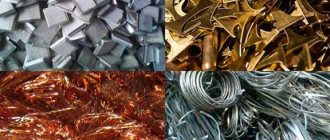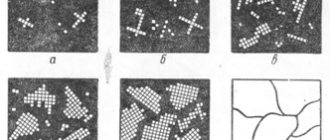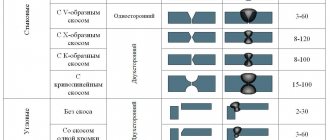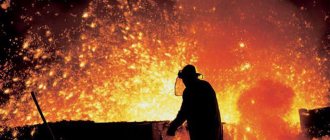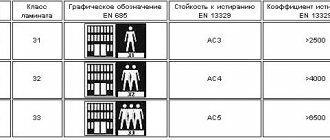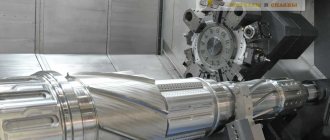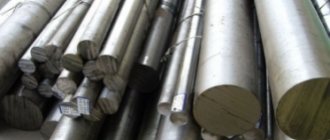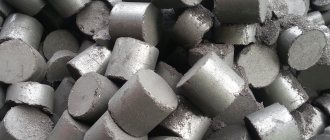Man began working with metals in the 4th millennium. In history, centuries of acquaintance with new types of metals are named after them - Bronze, Iron, Cast Iron. However, in nature it is impossible to find a single metal product that will consist 100% of one type of metal. In manufactured objects, parts or structures there are additives that were introduced by the person himself or they got there naturally. Because of this, it can be argued that all presented materials of metallic origin are metal alloys.
Molten metal
Basic definitions
People working in the field of metalworking need to know the types of metals and alloys in order to understand how certain processes occur during processing. Metallic materials form a group of simple substances that have their own characteristic properties.
The structure is a collection of atoms that are arranged in separate cells. The cells, in turn, are combined with each other, forming a crystal lattice. The inner part of the lattice is formed by atomic nuclei. Electrons are located around them. The crystal lattice is a collection of simple geometric shapes.
Properties of metals
This group of substances is determined by their characteristic features. The mechanical properties of aluminum, steel, iron, lead, tin and other types of metals have long been known to science:
- Hardness - this parameter determines the resistance of the material to the penetration of foreign impurities.
- Plasticity is an indicator that determines the preservation of the shape of an object under the influence of external forces.
- Viscosity - determines the integrity of the product under physical pressure.
- Strength is an indicator of the retention of the shape of a material after external influence.
- Wear resistance is a change in the surface of a material after friction.
- Elasticity is a change in the shape of a part or workpiece with the possibility of self-recovery to its original state.
Additional properties include resistance to high temperatures and cold, as well as melting point. Chemical properties include the ability to come into contact with other substances.
Signs of metals
Initially, it was believed that metals and alloys have three characteristic properties - malleability, ductility and brilliance. However, it turns out that some non-metallic substances also have shine. Nowadays, the main characteristic of a metal is considered to be a decrease in electrical conductivity with temperature changes.
Metal classification
In nature, there are several types of metals that differ in their properties, characteristics and appearance. Each variety behaves differently when interacting with other materials or under the influence of environmental factors.
Types of metals
Black
This group includes iron and alloys based on it. Characteristic features of ferrous metals:
- high density;
- the melting point is much higher than that of representatives of other groups;
- color - dark gray.
Representatives of the group of ferrous metals include: tungsten, chromium, cobalt, molybdenum, iron, nickel, titanium, manganese, uranium, neptunium, plutonium and others. They are used in various industries and have different properties. Steel and cast iron are considered popular.
The composition of ferrous metals includes not only iron, but also various impurities, which include sulfur, phosphorus or silicon. They contain different amounts of carbon in their composition.
Colored
Representatives of this group are more in demand. This is due to the fact that non-ferrous metals are used in more industries. They can be used in mechanical engineering, advanced technologies, radio electronics, and metallurgy. Key features of non-ferrous metals:
- low melting point;
- large color spectrum;
- good ductility.
Due to the low strength of representatives of the color group, they are used in conjunction with different types of denser materials. Representatives of this group: magnesium, aluminum, nickel, lead, tin, zinc, silver, platinum, rhodium, gold and others.
Gold bars (Photo: pixabay.com)
Soft
It is possible to distinguish certain types of metals, which will belong to the group of hard and soft. The soft ones are:
- Aluminum - has corrosion resistance, light weight, good ductility. It is used in the electrical industry, in the construction of aircraft and in the manufacture of dishes.
- Magnesium is a lightweight material that is susceptible to corrosive processes. To get rid of this drawback, it is used in alloys with other materials.
These are key representatives of the group of soft metals.
Solid
Popular materials in this group are:
- Tungsten is considered the most refractory metal. In addition to this, it is one of the most durable. Resistant to chemical influences.
- Titanium - the fewer inclusions of other materials in this metal, the stronger it becomes. It is used in the construction of cars, rockets, airplanes, ships, as well as in the chemical industry. It is well processed under pressure and is not susceptible to corrosive processes.
- Uranium is another metal considered one of the strongest in the world. It is radioactive and is used in various industries.
Representatives of the “hard group” are less amenable to processing and are used in fewer areas of human activity than soft ones.
Non-ferrous metals
Non-ferrous metals are more expensive than ferrous metals because they are more in demand in the world. They are needed in the manufacture of cars, the construction of houses and in the field of high technology - they are the main materials in the manufacture of smartphones and other electronics. In the construction industry, they are needed for the manufacture of all kinds of fittings, beams, corners, and so on.
Iron and its alloys are classified as ferrous metals, and everything else is non-ferrous metals
Non-ferrous metals are usually divided into three groups:
Heavy metals
The most prominent representatives of this category of non-ferrous metals are copper, brass and bronze. Copper is the most popular among them because it is an excellent conductor of electric current and is widely used in electronics. Various wires, bearings and other metal elements are made from brass. Monuments are often made from bronze because it is not afraid of rain, snow and mechanical damage.
A few years ago, scientists found that copper can prevent the spread of viruses
Light metals
The most popular light metals are aluminum, magnesium and titanium. They are fairly easy to melt and are also lighter than ferrous metals. Due to its resistance to corrosion, high ductility and low weight, aluminum is actively used in the construction of aircraft and cars. Magnesium is widely used in the manufacture of cases for various equipment, from cameras to engines. Titanium is highly durable and lightweight, which is why it is used in the manufacture of space rockets.
In the air, aluminum is instantly covered with a film that protects it from rust.
Noble metals
Noble metals include gold, silver and platinum. Due to the difficulty of mining and their beauty, they are considered the most expensive types of metals. Their value is constantly changing and you can buy them in banks, thereby investing your money in them. Precious metals are also widely used in jewelry. Rings, bracelets and other jewelry are made from them.
You can read about aluminum in the material about the most valuable metals in the world
Main types of alloys
There are different types of metal alloys, but it is worth talking only about the main ones.
The most popular are iron-based formulations. These include steel, cast iron and ferrites. If everything is clear with the first two alloys, then it’s worth briefly talking about what ferrites are. These are metal compounds that contain large amounts of carbon. They are used to make inductors. Other major metal alloys are also worth mentioning.
Products made from metal alloys
Magnesium alloys
They have high strength with a small size and weight of the workpiece. They are poorly protected from corrosion and do not have sufficient ductility for easy processing. Used in mechanical engineering. The main feature of magnesium-based alloys is their ability to absorb vibrations of moving elements.
Beryllium alloys
Resistant to corrosive processes. Beryllium is most often mixed with copper. This mixture is called Beryllium Bronze. It is used for the manufacture of gears, contacts, clock mechanisms, and bearings.
Zinc alloys
The features of these compounds are their low melting point, high ductility, and corrosion resistance. Used for the manufacture of bearings, household appliances, and mechanical engineering.
Titanium alloys
Difficult to process material. Alloys based on it are lightweight, high strength, and resistant to environmental factors. To make metal processing easier, it must be heated. Used in various industries.
Aluminum alloys
Alloys based on this material are considered the most popular. You can meet them in most areas of human life. They have the following advantages:
- corrosion resistance;
- light weight;
- plastic;
- electrical conductivity.
The main disadvantage of this material is its low melting point. Already at 200 degrees, the properties of the alloy deteriorate. Aluminum alloys are used in various industries. Due to its low specific gravity, aluminum has become very popular in aircraft construction.
Aluminum (Photo: pixabay.com)
Copper alloys
Most copper-based compounds are brass. Depending on the copper content in the alloy, red and yellow brass are distinguished. Small parts for high-precision and miniature mechanisms are made from this material. It has a high ductility rate, making it easy to work with copper-based compounds.
What metal alloys are produced?
Alloys are substances that are structurally homogeneous and contain two or more chemical elements, mainly metals. The base for the manufacture of most alloys is made up of several metallic materials with the addition of modifying and alloying impurities. In addition, the alloy may contain remaining inclusions of natural, accidental and technological origin.
| Precision alloy |
| Bronze alloy |
| Copper-nickel alloy |
| Brass alloy |
Depending on the production technology, there are two categories of alloys:
1. Cast . For their production, a fairly popular method is used - crystallization of a homogeneous consistency based on hot particles.
2. Powder alloys . They are formed as a result of the action of a press on a mixture of various powders, which are sent to a special oven and undergo a high-temperature treatment cycle. For the feedstock, metal powder and several chemical compounds are used. For example, the production of hard alloys involves the use of tungsten or titanium carbides.
Taking into account the method of obtaining the finished material, 2 types of alloys are distinguished:
1. Foundries (these include cast iron and silumin).
2. Deformable (powder alloys and steel).
In different industrial sectors, many subtypes of alloys are used - tool, special, structural. Depending on the scope of application, they are divided into several types. Structural alloys include cast iron, steel, duralumin and compounds with special properties, for example, anti-friction characteristics and resistance to sparking.
This category also includes the following materials:
1. Brass.
2. Bronze.
3. Alloys for the manufacture of bearings.
4. Babbitt.
5. Alloys for electric heating and measuring equipment.
6. Nichrome.
7. Manganin.
8. Blanks for the production of cutting tools.
9. Will win.
Corrosion-resistant, heat-resistant, low-melting, temperature-electric, magnetic and amorphous alloys are also suitable for industrial purposes. The number of varieties that are currently used is quite large and is constantly increasing. Alloys are classified according to two criteria:
1. Iron-based materials.
2. Non-ferrous metal alloys.
Below are the most popular and important alloys for industrial production with the main areas of their use.
Steel.
By steel we mean a compound of iron and carbon (the concentration of the latter is 2%). Due to the inclusion of various alloying impurities such as vanadium, chromium or nickel, steel acquires alloyed properties.
Of all existing varieties of alloys, steel occupies leading positions in terms of supply and production volumes. The areas of their operation are very wide, so it is quite difficult to indicate all areas.
Low-carbon steels, which contain up to 0.25% carbon, are used for structural purposes, and those with a much higher percentage (from 0.55) are used in the production of low-speed cutting devices, drills and razor blades. Alloyed subtypes are in demand in the mechanical engineering industry and in the manufacture of high-speed equipment.
Cast iron.
An alloy of iron with 2-4% carbon is called cast iron. Another essential element of this material is silicon. Cast iron alloys are used in the manufacture of various products with utilitarian functions, for example, manhole covers, pipeline fittings, engine cylinder blocks. A properly cast product has improved mechanical characteristics.
Copper alloys.
This category of alloys is represented by various subtypes of brass, i.e. copper-based materials containing from 5 to 45% zinc. If 5 to 20% zinc is added to brass, it is called red (tompak), and when the zinc concentration is in the range of 20-36%, the alloy is called yellow brass (alpha brass).
This variety is widely in demand in the manufacture of small parts that require special machinability and accuracy.
In addition, copper alloys with the addition of aluminum, silicon and tin or beryllium are used for industrial purposes.
For example, phosphorus and silicon bronze (a copper alloy with the addition of silicon) have excellent strength characteristics and are used in the production of membranes and springs.
Lead alloys.
Essential materials for the soldering process. Regular solder contains 1 part lead and 2 parts tin. The metal alloy is in demand for soldering electrical wires and pipeline components.
Antimony-lead alloys are used to make shells for telephone cables and battery plates. Alloys using cadmium, tin and bismuth have a melting point that is much lower than the boiling point of the liquid (70°C). Because of this feature, they are used in the production of valves for fire-fighting equipment of sprinkler systems.
Pewter alloy, indispensable for the manufacture of decorative kitchen utensils and jewelry, consists of 85-90% tin. The remainder of the composition is lead. Lead is also added when developing so-called babbitts, which are bearing alloys. Lead alloys also contain arsenic, tin and antimony.
Light alloys.
In mechanical engineering, light alloys with improved strength properties, resistance to high temperatures and mechanical stress are in demand. Beryllium, magnesium, titanium and aluminum are used as raw materials for the manufacture of the material. Not all magnesium and aluminum alloys are suitable for use in high-temperature and aggressive environments.
Aluminum alloys.
This category includes casting alloys (aluminum and silicon), high-pressure casting alloys (magnesium and aluminum), and high-strength hardening alloys based on aluminum and copper.
The main advantage of aluminum alloys is their low cost and strength at low temperatures, as well as ease of processing. The workpiece can be simply forged, stamped or used for drawing, extruding and deep drawing.
The material can be easily welded and processed using metal-cutting equipment. The performance characteristics of aluminum alloys are lost when the temperature rises to 175°C. But due to the formation of an oxide film on the surface, they are not afraid of corrosion processes when exposed to various aggressive conditions.
The alloy is a good conductor of electrical energy and heat, is characterized by enhanced reflective properties, non-magneticity and harmlessness to human health when interacting with food (aluminum products do not rust, do not have any color or taste). In addition, aluminum alloys are protected from explosion, because they do not produce sparks and can suppress impact energy.
Due to the listed features, aluminum alloys are widely used in the automotive industry, car and aircraft construction, construction, for the installation of high-voltage power lines and in the food industry. The presence of a small amount of iron in the alloys increases the safety margin at high temperatures, but negatively affects corrosion resistance and ductility at room temperature.
Magnesium alloys.
This type of alloy is characterized by its low weight and strength, as well as improved casting properties. It is quite easy to process the material by cutting. In this regard, magnesium alloys have found application in the rocket and aircraft industries, where they are used for the production of engines, wheels, housings, fuel tanks and other components.
Certain types of alloys are characterized by an increased viscous damping coefficient; because of these properties, they are used in the production of moving elements of vehicles and structural components that are used in conditions of high vibrations.
The disadvantages of magnesium alloys include softness, instability to wear and insufficient ductility. However, the workpiece is easy to form by heat treatment. In addition, magnesium alloys are suitable for gas, electric arc and resistance welding processing. To ensure high-quality protection of alloys from corrosion, they are coated with a special shell.
Titanium alloys.
In terms of performance characteristics, titanium alloys are many times better than magnesium and aluminum alloys in terms of strength and degree of elasticity. With increased density, they are characterized by special resistance to mechanical stress, second only to beryllium alloys.
Titanium alloys contain a minimum concentration of nitrogen, carbon and oxygen, which makes them quite plastic. Due to their low electrical conductivity and low thermal conductivity coefficient, titanium alloys are resistant to wear and abrasion, and their strength is much higher than that of other magnesium alloys.
The creep of individual grades at average stress reaches 90 MPa, remaining at this level when heated to 600°C, which is much higher than the limit for magnesium and aluminum alloys. Alloys with titanium retain their malleability up to a temperature of 1150°C, so for their processing it is allowed to use electric arc welding with inert gas or spot and seam welding.
It is unjustified to process the material using cutting technology, which is explained by the rapid setting of the cutting device. Melting of titanium alloys is carried out under vacuum conditions or a controlled atmosphere to eliminate the problem of the release of embedded impurities of oxygen and nitrogen into the environment.
Titanium alloys are known to be widely used in the space and aviation industries. On their basis, various mechanisms and parts are produced, which are operated within the temperature range from 150 to 430°C. Components of specialized chemical equipment are also made from titanium.
Unique light armor has been developed from titanium-vanadium alloys for equipment and cockpits of combat aircraft. And for the manufacture of jet engines and aircraft bodies, the main material is an alloy of aluminum, titanium and vanadium.
Beryllium alloys.
Having excellent ductility, beryllium alloy is superior to other metal alloys in terms of specific strength. For its production, the principle of adding brittle grains of beryllium to a soft plastic base, for example, to heated silver, is used.
Being a low-density material, beryllium alloy is actively used in the development of missile guidance systems. Its modulus of elasticity is higher than that of steel or beryllium bronze, which allows the material to be used for the production of springs and contacts in electrical circuits.
In its pure form, the alloy is used as a moderator and neutron reflector in nuclear reactors. Due to the possibility of forming a protective oxide film, it retains its performance characteristics when exposed to high temperatures.
The main difficulty in processing the alloy is related to its toxicity. Fumes from heated beryllium contribute to the development of dangerous health problems, including respiratory diseases and dermatitis.
You can buy metal products based on various alloys through our website. Industrial includes a large number of Russian suppliers of metal products from different regions. The warehouses of our enterprise in the Moscow region store non-ferrous and stainless steel products, products made from specialized alloys and steels, as well as unique raw materials of the metallurgical industry.
In addition, we engage in cutting and casting of metal based on the drawings and documentation provided by the customer. The production process involves strict control using ultrasonic and chemical equipment.
Distribution of alloys in modern industry
The following areas of industry in which alloys are used are distinguished:
- Manufacturing of measuring instruments.
- Jewelry making. Making jewelry.
- Construction of rockets, ships, airplanes. Mechanical engineering.
- Creation of contacts, microcircuits, precise connections.
- Weapons production.
- Aerospace industry.
- Cryogenic area.
- Manufacturing of medical equipment.
- Nuclear physics (parts for reactors).
- Chemical and food industry.
These are the areas of application of metals and their alloys in industry. Metals and alloys can be found in all areas of life. Each compound has its own properties and characteristics, which change as foreign impurities are added to the composition.
